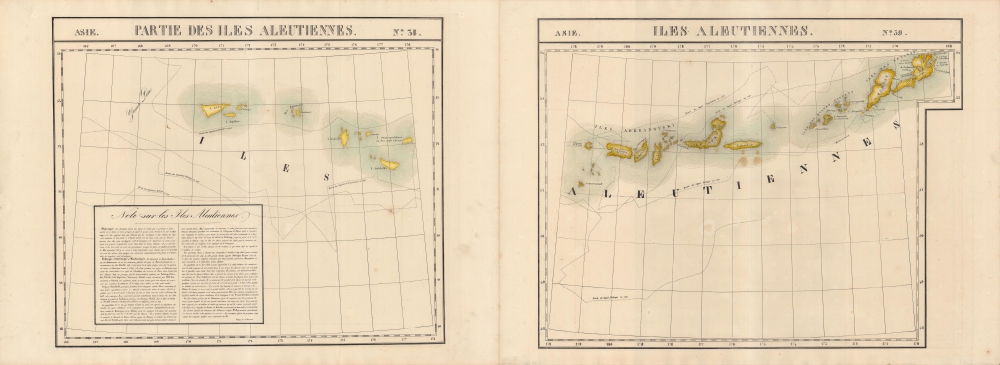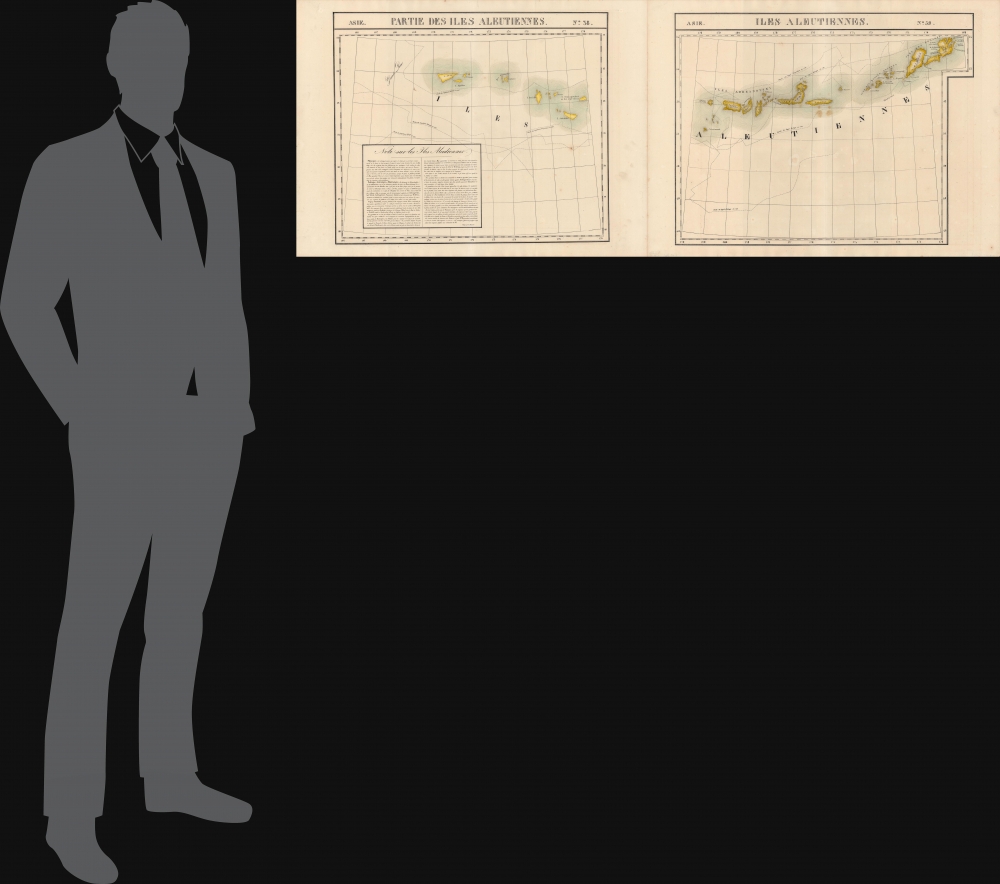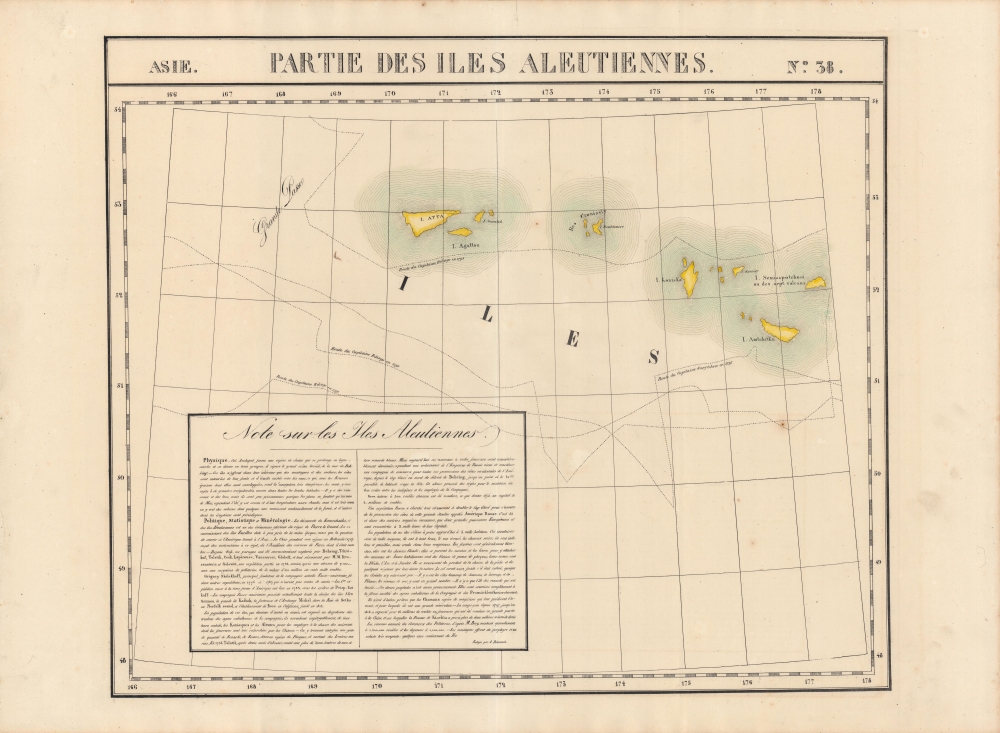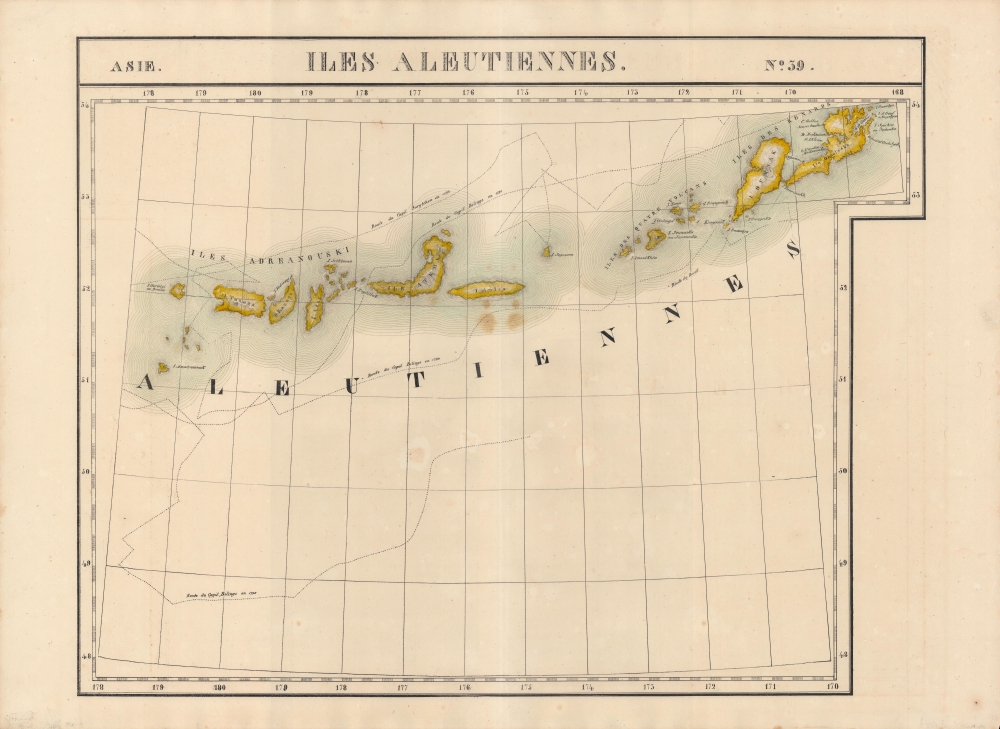1827 Vandermaelan Map of the Aleutian Islands, Alaska
AleutianIslands-vandermaelen-1827
Title
1827 (undated) 21 x 57 in (53.34 x 144.78 cm) 1 : 1641836
Description
A Closer Look
The Aleutians are displayed stretching from Unalaska (Onnalaska) Island in the east to Attu (Atta) Island in the west, with mountains, bays, other coastal features, and islets indicated. A textbox at bottom-left provides information on the physical geography of the islands, as well as their history, including exploration by Europeans, such as Vancouver, La Perouse, and Behring, some of which are tracked on the map. Vandermaelen also includes data about the islands' population and their administration as part of Russian America, still a relatively recent development at the time.Russian America
Russian interest in America was largely the result of two processes - Russian expansion into Siberia and maritime exploration of the Arctic and Pacific. As in Siberia, Russia had a distinct economic interest in harvesting natural resources from Alaska, namely furs. In 1799, Tsar Paul I issued a decree (Ukase) that claimed lands north of the 55th parallel and gave exclusive privileges to the Russian-American Company (an outgrowth of the pre-existing United-American Company or Shelikhov-Golikov Company).Although never numbering more than 700, the Russians did establish a settlement at Novo-Arkhangelsk (now Sitka) as well as outposts as far south as the coast of California and Hawaii. They had a major impact on the native inhabitants of the Aleutians and mainland Alaska, with some 80 percent of the indigenous population dying from disease within two generations, not to mention those killed in violent conflict. The environmental effects were similarly severe, as the population of animals hunted for their furs (especially seals and otters) declined dramatically, becoming a major source of tension with indigenous Alaskans.
In the end, the colony was relatively costly to maintain, as well as being not especially profitable due to the distances involved and the general reduction of the furrieries. By the 1860s, the Russians expected the Americans, British, or some other power to try to grab Alaska and preferred that it not go to their great rival Britain, which they feared could use Canada as a base to encroach on Siberia. The Tsar was also desperate for money to pay for Russia's costly loss in the Crimean War (1853 - 1856). It therefore made sense to sell Russia's American colony to the United States in 1867.
Publication History and Census
This map appeared in two sheets as maps No 38 and 39 in the second volume, 'Asie,' of Vandermaelen's Atlas universel de géographie physique, politique, statistique et minéralogique. Each sheet measures 21 inches tall and 28.5 inches wide; together they are 57 inches wide. The atlas was produced in one edition in 1827, with only 810 complete sets sold. The full set of six volumes appears in eleven institutional collections in OCLC, and the second volume alone is listed in 14, but the map is not independently cataloged.Cartographer
Philippe Marie Guillaume Vandermaelen (December 23, 1795 - May 29, 1869) was a Flemish cartographer active in Brussels during the first part of the 19th century. Vandermaelen is created with "one of the most remarkable developments of private enterprise in cartography," namely his remarkable six volume Atlas Universel de Geographie. Vandermaelen was born in Brussels in 1795 and trained as a globe maker. It was no doubt his training as a globe maker that led him see the need for an atlas rendered on a universal scale in order that all bodies could be understood in relation to one another. In addition to his great work Vandermaelen also produced a number of globes, lesser maps, a highly detailed 250 sheet map of Belgium, and several regional atlases. More by this mapmaker...








